3 Easy Ways to Bypass Windows 10 Password with Command Prompt
- Home
- Support
- Tips System Rescue
- 3 Easy Ways to Bypass Windows 10 Password with Command Prompt
Summary
Unlock your Windows 10 PC with ease by exploring alternative methods to bypass the password using command prompt. From resetting local admin password to using tools like Renee PassNow, this article presents different techniques to bypass the Windows 10 password. Say goodbye to forgotten passwords and regain access to your computer with these command prompt tricks.
Table of contents
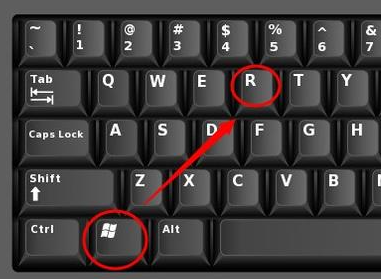
net user user_name new_password
net user username /active:yes
| Windows Version | Download Link | Requirement |
|---|---|---|
| Windows 7 | https://learn.microsoft.com/lifecycle/products/windows-7 | PC with a working Internet connection/ a blank USB flash drive or DVD with at least 8 GB of available storage space/ a product key |
| Windows 8/8.1 | https://www.microsoft.com/software-download/windows8 | Same to above |
| Windows 10 | https://www.microsoft.com/software-download/windows10 | Same to above |
| Windows 11 | https://www.microsoft.com/software-download/windows11 | Same to above |
move c:\windows\system32\utilman.exe c:\
copy c:\windows\system32\cmd.exe c:\windows\system32\utilman.exe
net user
net user /add
net localgroup administrators /add
Shift + F10
Shift + Fn + F10
copy c:\utilman.exe c:\windows\system32\utilman.exe
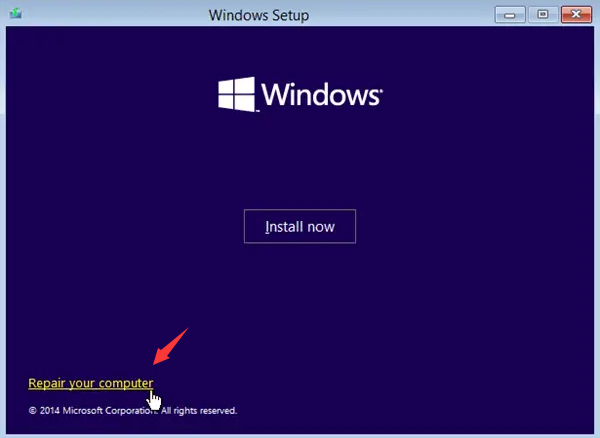
copy C:\Windows\System32\sethc.exe C:\
copy /y D:\Windows\System32\cmd.exe D:\Windows\System32\sethc.exe
net user "your_user_name" "new_password"
Start by downloading Renee PassNow from the official website and install it on a different computer that you can access. You can choose the appropriate version based on your computer’s operating system.

Remove Windows Login Password 3 steps for whole password remove process.
Recover the files Recover the deleted files without Windows system.
Transfer the data Transfer the important files of the computer with system.
Multifuctional Data transfer, data recovery, bootable problem recovery can be run without system.
Highly compatible Windows 11/10/8.1/8/7/XP/Vista. UEFI boot.
Remove Login Password Support Windows 11/10/8.1/8/7/XP/Vista. UEFI boot.
Recover the files Recover the deleted files without Windows system.
Transfer the data Transfer the important files of the computer with system.
Launch Renee PassNow and insert a USB flash drive or blank CD/DVD into the computer. Select the option to create a bootable media. Follow the on-screen instructions to complete the process.
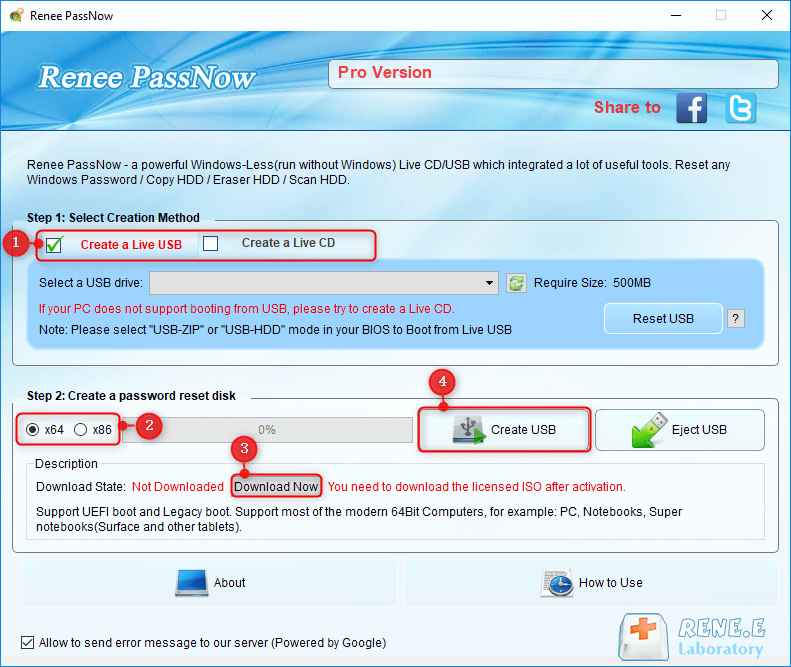
Insert the bootable USB or CD/DVD into the locked Windows computer. Restart the computer and enter the BIOS settings by pressing the appropriate key (usually F2 or Delete). Configure the boot order to prioritize the bootable media.
| Server Type | Enter boot menu method |
|---|---|
| DELL | Press the F12 key repeatedly before the Dell logo appears on the screen. |
| HP | Press the F9 key multiple times when the HP logo is displayed. |
| BIOS Name | Enter boot menu method |
|---|---|
| ASRock | DEL or F2 |
| ASUS | DEL or F2 for PCs/ DEL or F2 for Motherboards |
| Acer | DEL or F2 |
| Dell | F12 or F2 |
| ECS | DEL |
| Gigabyte / Aorus | DEL or F2 |
| Lenovo (Consumer Laptops) | F2 or Fn + F2 |
| Lenovo (Desktops) | F1 |
| Lenovo (ThinkPads) | Enter then F1 |
| MSI | DEL |
| Microsoft Surface Tablets | Press and hold Power and Volume Up buttons |
| Origin PC | F2 |
| Samsung | F2 |
| Toshiba | F2 |
| Zotac | DEL |
| HP | Esc/ F9 for `Boot Menu`/ Esc/ F10/ Storage tab/ Boot Order/ Legacy Boot Sources |
| INTEL | F10 |

After successfully booting from the bootable media, Renee PassNow will load. Select “PassNow!” function after booting from the new created Windows password reset disk.
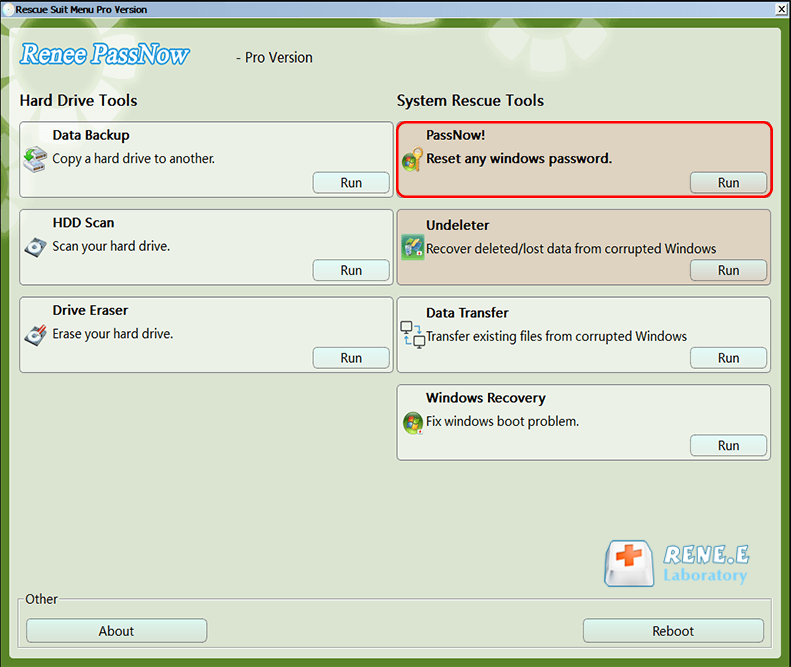
Choose the user account for which you want to reset the password. Then, click on the “Clear Password” button. Renee PassNow will remove or reset the password for the selected user account.
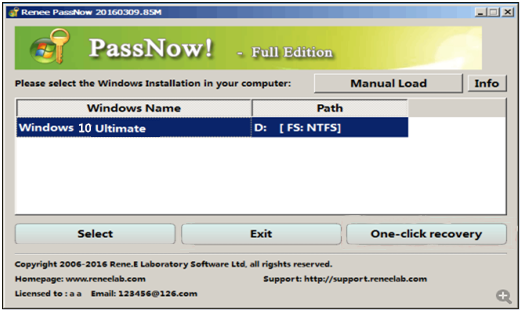
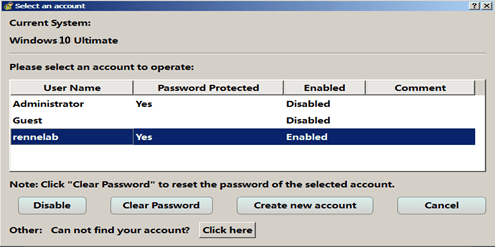
Once the password is reset, remove the bootable media from the PC and restart the computer. You will now be able to log in to Windows Account without a password.
Relate Links :
Troubleshooting Guide: How to Fix the I Forgot My PIN not working Issue in Windows 10
02-12-2023
Ashley S. Miller : Having trouble with your Windows 10 PIN? Don't worry, we've got you covered. In this troubleshooting guide, we'll...
Forgot Windows Password but only know the PIN?
27-09-2023
Jennifer Thatcher : Can't remember your Windows password, just know your PIN, but Windows keeps asking for password? Don't panic. Check...
Change Your PIN: A Guide for Windows 10 Users
13-10-2023
Jennifer Thatcher : Upgrade your security with these tips for changing your PIN on Windows 10. Learn the best practices for...
Forgot Windows 10 PIN? A Comprehensive Guide to reset it
27-09-2023
Ashley S. Miller : Forgot your Windows 10 PIN? Don't worry, here's a step-by-step guide on how to recover or reset it...




